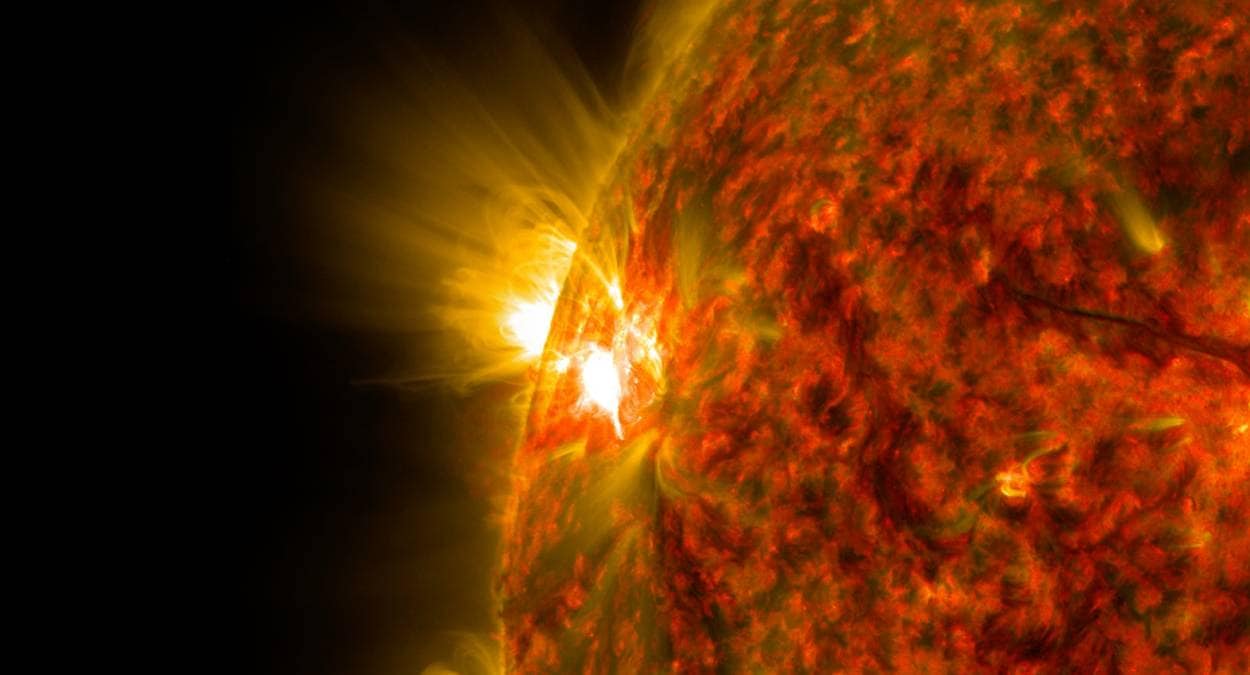sun is restless again Emerged Sunspot 7 times bigger than Earth increased risk of solar storms

The report expressed surprise that the sunspot did not exist until two days ago. It has increased its size very rapidly. It is estimated that due to sunspots, incidents of coronal mass ejection and solar flare may occur very soon.
In a tweet on Tuesday, NASA Sun and Space said that in the last 24 hours, 4 coronal mass ejections and 1 solar flare have occurred from the Sun. Coronal mass ejections, or CMEs, are large clouds of solar plasma. After a solar explosion, these clouds spread in space in the Sun’s magnetic field. Due to their rotation in space, they expand and often reach a distance of several lakhs of miles. Many times they collide with the magnetic fields of the planets.
What’s the Sun up to right now? Here’s a view of the Sun taken today in ultraviolet light by one of NASA/NOAA’s Geostationary Operational Environmental Satellites (GOES-18). Over the past 24 hours, the Sun has produced 4 coronal mass ejections and 1 solar flare. pic.twitter.com/5KsWNjCOhS
— NASA Sun & Space (@NASASun) June 26, 2023
When the direction of CME is towards the Earth, it can cause geomagnetic disturbances. Due to these, short circuits may occur in satellites and the power grid may be affected. If their impact is severe, they can also put astronauts in Earth’s orbit in danger.
Sunspots appear on the Sun due to its solar cycle. The 11-year solar cycle has made the Sun very turbulent. This solar cycle will continue till the year 2025. Because of this, solar storms will continue to occur on Earth. If their intensity becomes widespread, they can destroy our satellites. Could put astronauts in danger. Can disrupt the Internet on Earth. Can damage power grids.
NASA’s Solar Dynamics Observatory monitors the activities happening in the Sun. She has been collecting data since 2010. NASA is developing such technology through which alerts can be issued on solar storms 30 minutes in advance in the future.